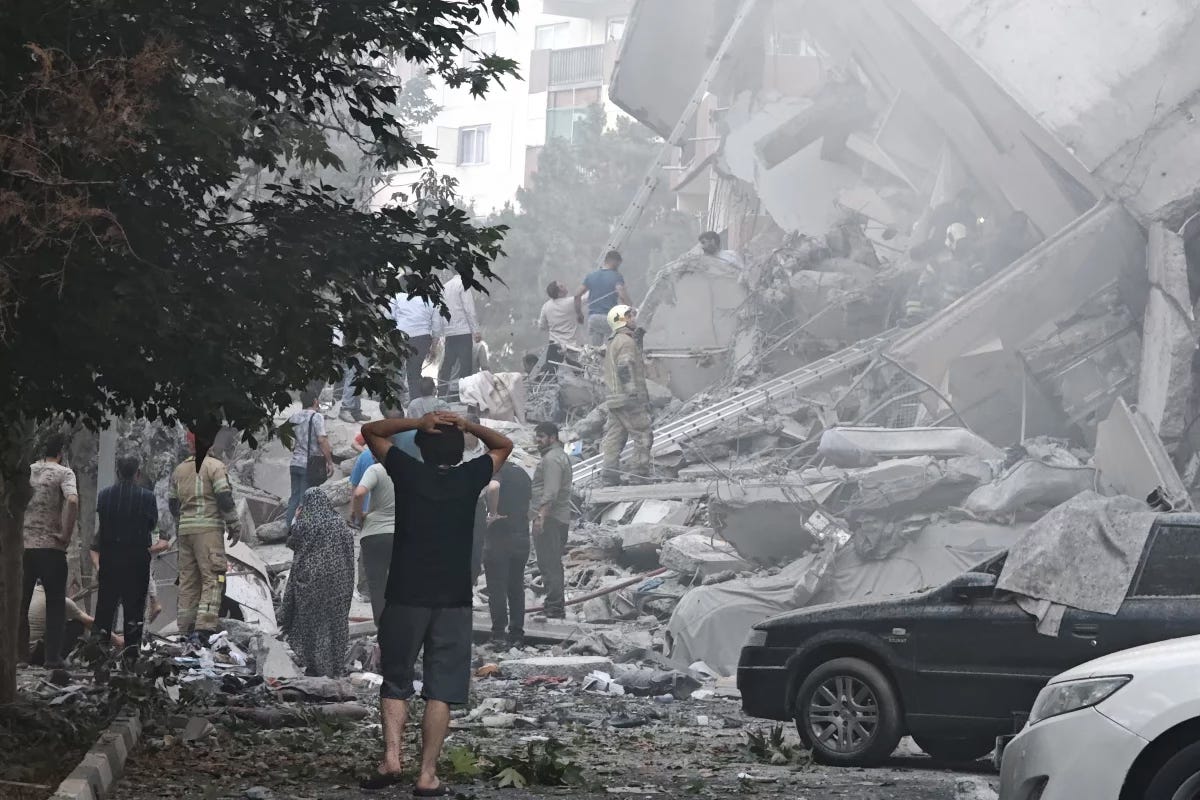The Capsule: Israel-Iran Conflict
What events led to the current conflict? Plus, the future of the Vaccine Alliance and a once-in-a-decade SDG conference.
Welcome back to The Capsule—your curated dispatch of the most important international development news stories, delivered to your inbox biweekly.
The Israel-Iran Conflict Grows into Open Warfare
By Théry Flora Gahimana

The sudden eruption of open conflict between Israel and Iran sent shockwaves through the international community, threatening regional stability and drawing major powers into a dangerous standoff. While a fragile ceasefire is currently in place, questions remain regarding the future of Iran’s nuclear program and the potential for diplomatic efforts to resolve enduring tensions.
What are the roots of the escalating hostilities between the two countries?
After Iran severed diplomatic ties with Israel following the 1979 revolution, the two nations entered a prolonged period of mounting hostilities, avoiding large-scale direct military confrontation. However, ongoing tensions ultimately escalated to Israel’s unprecedented targeted airstrikes in June 2025.
Years of Covert Warfare and Assassinations (2010-2023) Between 2010 and 2023, the Israel-Iran rivalry simmered in the shadows through cyber warfare, proxy wars, and targeted killings. The 2010 Stuxnet cyberattack, allegedly led by the U.S. and Israel, significantly disrupted Iran’s nuclear bases. In turn, Iran expanded its "Axis of Resistance,” providing arms, funding, and training to Hamas, Hezbollah, and the Houthis, further destabilising the region.
Hamas Attack and Regional Fallout (2023) The October 7th attack led by Hamas was a significant turning point. Although Iran denied direct involvement, it had long supported Hamas militarily and politically. Israel’s subsequent Gaza war weakened Hamas but also triggered broader regional conflict, including clashes with Hezbollah in Lebanon and Houthi missile strikes in the Red Sea.
First Direct Missile Exchange (2025) On June 13, 2025, Israel launched its first official attack targeting military and nuclear targets in Tehran, killing senior IRGC leaders and scientists. Iran retaliated with missile attacks, targeting Israeli cities and infrastructure. Over the course of the 12-day conflict, both countries exchanged ongoing direct attacks targeting key areas such as military bases and manufacturing plants.
The United States’ Role and What Comes Next
The United States moved from indirect diplomacy to direct military engagement in the escalating conflict on June 22, 2025, with U.S. airstrikes on Iran’s Fordow, Natanz, and Isfahan nuclear facilities, carried out in coordination with Israel.
In response to Iranian threats, President Trump issued a stark warning:
The U.S.-brokered ceasefire, announced on June 24, remains tenuous, with both sides accusing each other of violations but publicly committing to restraint. Iran’s forewarned strikes on an American Qatari airbase signalled a reluctant de-escalation, but critical questions remain:
Will Iran accelerate its nuclear program?
Can meaningful diplomacy resume after military strikes?
How will this affect broader regional stability?
In Other News…
🇺🇳 Gavi, the Vaccine Alliance, concluded its five-year pledging summit with $9 billion in commitments—falling $2.9 billion short of its $11.9 billion target after the United States, its third-largest donor, withdrew funding. The organization, which negotiates bulk vaccine purchases for low-income countries has saved 19 million lives and immunized 1 billion children since its inception. The UK and the Gates Foundation remain its top donors, while the UN handles vaccine distribution. The pledging shortfall follows an inflammatory video speech by U.S. Health Secretary RFK Jr. at the June 25 summit in Brussels, questioning the long-proven science of vaccine safety and efficacy.
🇪🇸 From June 30 to July 3, the fourth International Conference on Financing for Development (FfD4) will take place in Seville, Spain, attended by over 50 world leaders and 4,000 representatives from business, civil society, and finance. The conference aims to restructure global finance to meet the 17 UN Sustainable Development Goals (SDGs) by 2030. However, with declining aid from key donor countries and rising global instability, progress toward these goals is faltering.
Key discussions include reforming the international financial system, addressing debt and climate crises, and expanding development banks. The event will produce an outcome document covering seven action areas, from trade to innovation. Notably, the U.S. will not attend this rare, high-level policy forum, last held in 2015.




